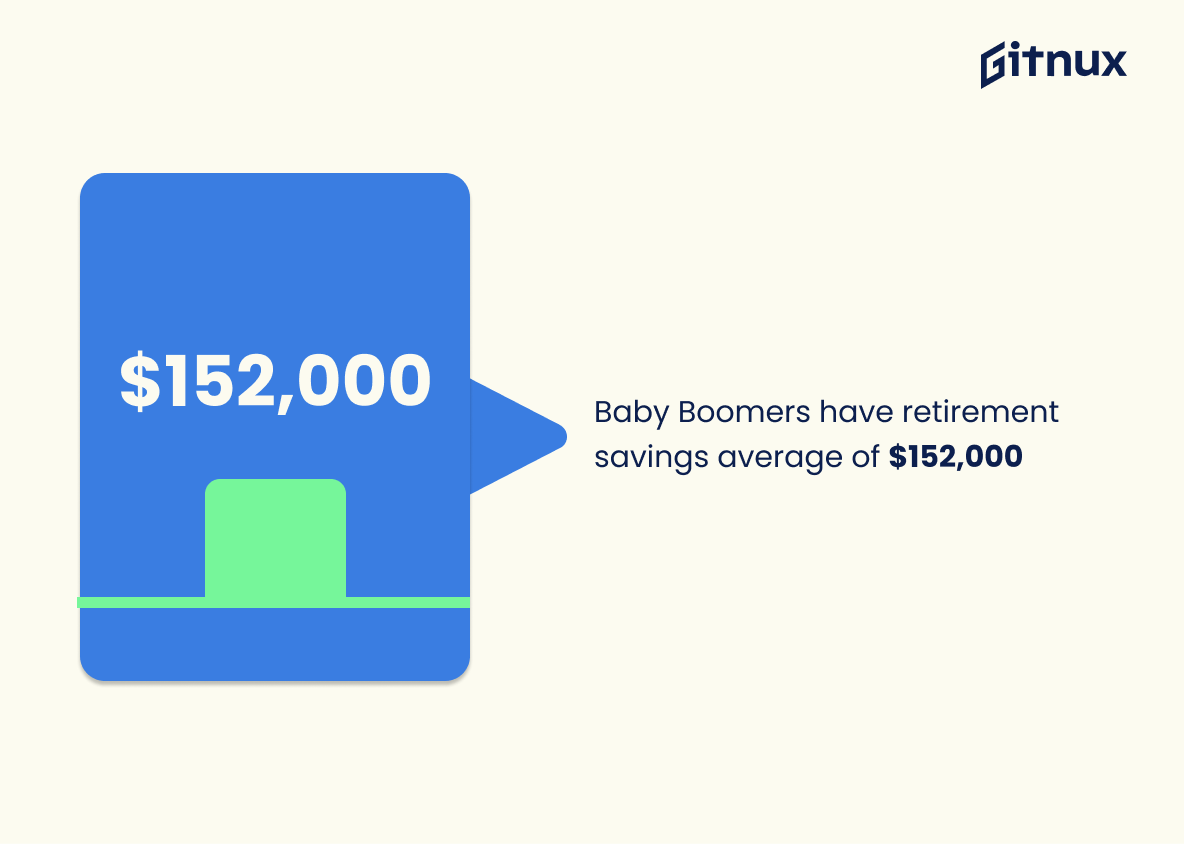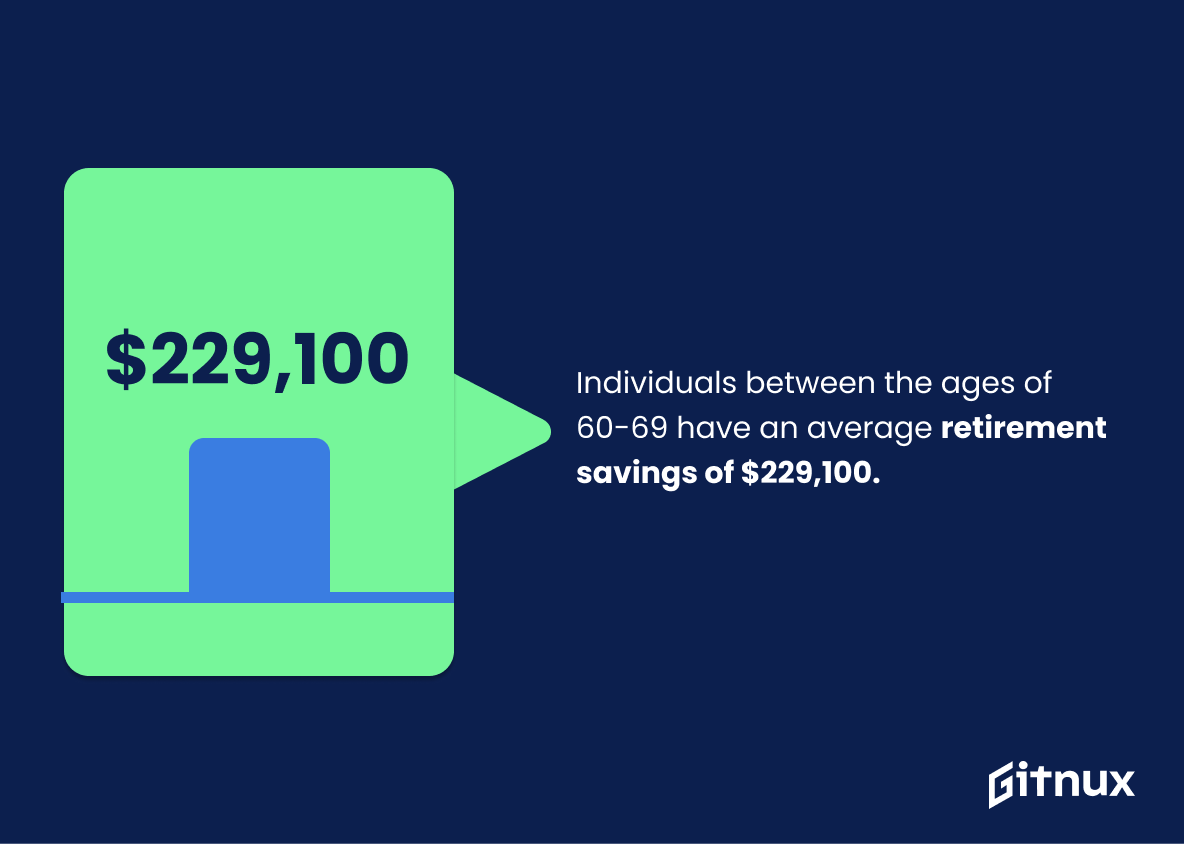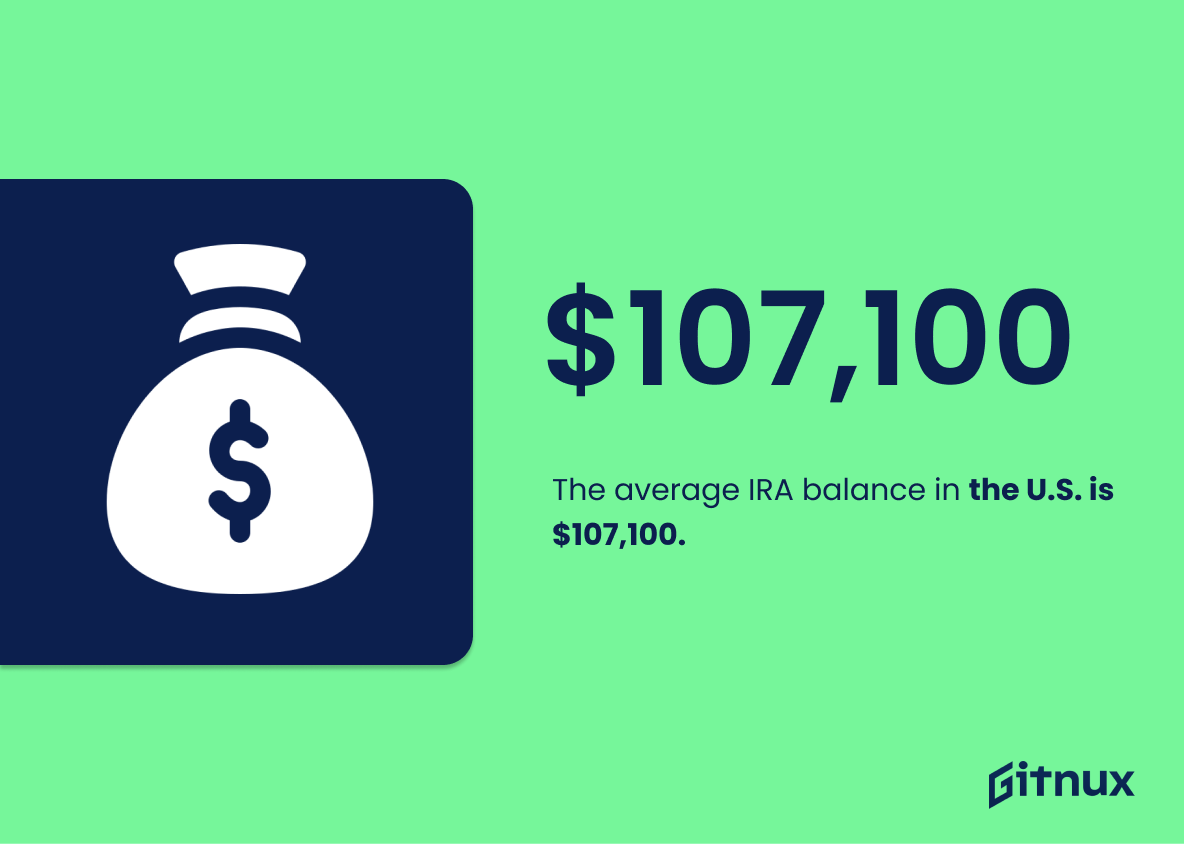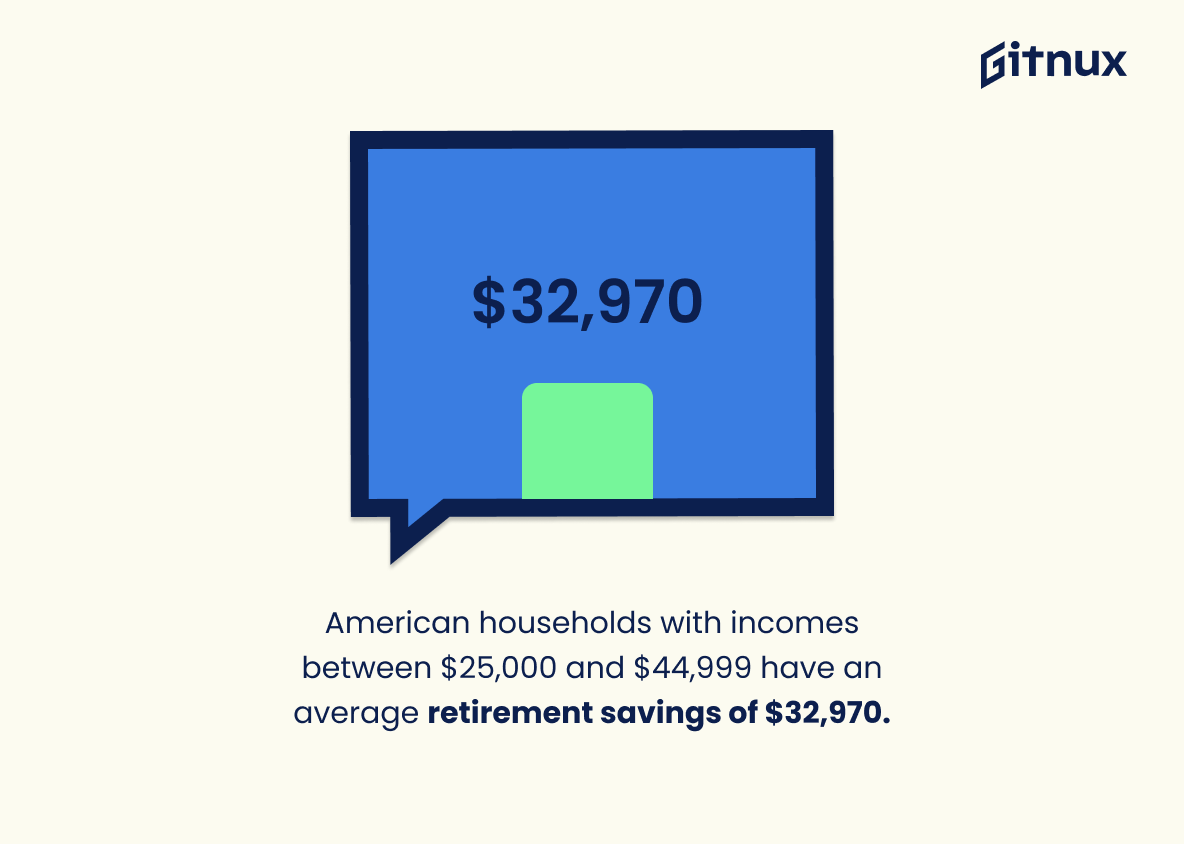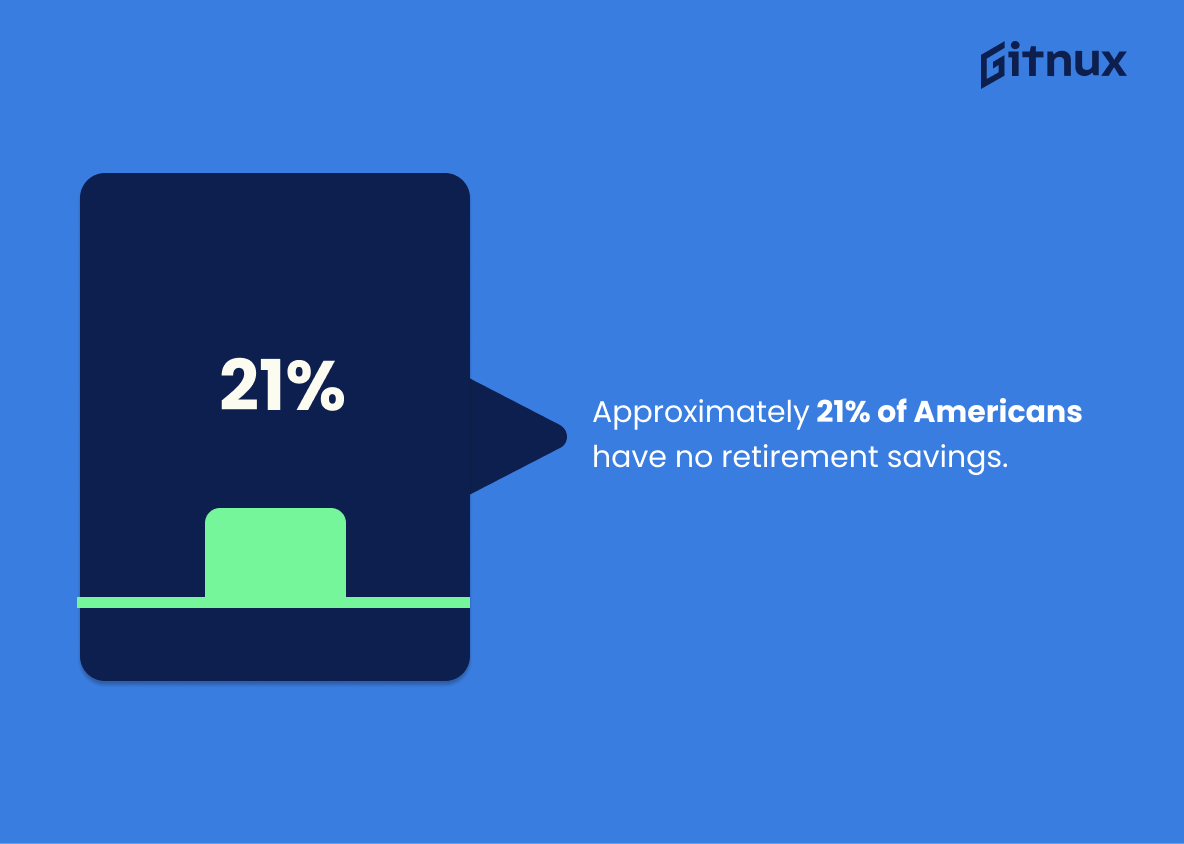Retirement savings are an important part of financial planning for many Americans. Knowing the average retirement savings statistics can help individuals plan and prepare for their own retirement. This blog post will explore 20 different statistics about American households’ average retirement savings, including information on age groups, income levels, and access to workplace plans. We’ll also look at how much retirees typically spend in their golden years and what percentage of working-age families have no retirement savings at all. Read on to learn more about these key figures.
Average Retirement Savings Statistics Overview
The median retirement savings for all working-age families is $5,000.
This statistic is a stark reminder of the financial reality for many working-age families. It highlights the need for individuals to plan ahead and save for retirement, as the median savings of $5,000 is far from enough to sustain a comfortable retirement.
Only 16% of American workers have over $200,000 saved for retirement.
This statistic is a stark reminder of the financial insecurity that many Americans face when it comes to retirement. It highlights the need for individuals to plan ahead and save for their future, as only a small fraction of the population is able to accumulate such a large sum of money for retirement.
The average 401(k) balance in the U.S. is $106,478.
This statistic is a telling indication of the state of retirement savings in the U.S. It reveals that, on average, Americans are not saving enough for retirement, as the amount falls short of the recommended amount of $1 million. This statistic serves as a reminder to individuals to start saving for retirement as soon as possible, as the earlier one starts, the more time their money has to grow.
Baby Boomers have retirement savings average of $152,000.
This statistic is a telling indication of the financial security of Baby Boomers as they enter retirement. It provides insight into the amount of money they have saved up to support themselves in their later years, and can be used to compare the retirement savings of Baby Boomers to other generations. This statistic is an important piece of information for anyone looking to understand the financial state of Baby Boomers and the retirement savings of other generations.
Generation X has an average retirement savings of $66,000.
This statistic is a telling indication of the financial security of Generation X. It reveals that, on average, members of this generation have saved a substantial amount of money for retirement, suggesting that they are well-prepared for their later years. This statistic is especially pertinent in the context of a blog post about Average Retirement Savings Statistics, as it provides a valuable insight into the financial state of Generation X.
Millennials have saved an average of $23,000 for retirement.
This statistic is a testament to the financial responsibility of Millennials, showing that they are taking their retirement savings seriously. It is an encouraging sign that Millennials are taking steps to ensure their financial security in the future. This statistic is an important reminder that saving for retirement should be a priority for everyone, regardless of age.
Approximately 51% of working-age Americans have access to retirement saving plans at work.
This statistic is a telling indication of the state of retirement savings in the United States. It reveals that while half of working-age Americans have access to retirement saving plans at work, the other half may be missing out on the opportunity to save for their future. This highlights the importance of understanding the options available to those who may not have access to retirement saving plans at work, and the need to ensure that everyone has the opportunity to save for their retirement.
Individuals between the ages of 50-59 have an average retirement savings of $203,600.
This statistic is a telling indication of the financial security of individuals in their later years. It highlights the importance of saving for retirement early on, as those who have saved more in their 50s are likely to have been saving for a longer period of time. It also serves as a benchmark for those who are in the same age group, allowing them to compare their own savings to the average and make adjustments accordingly.
Individuals between the ages of 60-69 have an average retirement savings of $229,100.
This statistic is a telling indication of the financial security of individuals in their golden years. It highlights the importance of saving for retirement early and often, as those who have saved more are likely to have a more comfortable retirement. This statistic is a reminder that retirement savings should be a priority for those in their 60s, as it can make a huge difference in their quality of life.
43% of Americans are at risk of not having enough money saved for retirement.
This statistic is a stark reminder of the financial insecurity that many Americans face when it comes to retirement. It highlights the need for individuals to take proactive steps to ensure they have enough money saved for their golden years. It also serves as a warning to those who may be underestimating the amount of money they need to save for retirement.
The average IRA balance in the U.S. is $107,100.
This statistic is a telling indication of the state of retirement savings in the U.S. It reveals that, on average, Americans have a substantial amount of money saved for retirement, which is a positive sign. However, it also implies that there is a large disparity between those who have saved enough and those who have not. This statistic is an important reminder that retirement planning should be a priority for everyone.
American households with incomes between $25,000 and $44,999 have an average retirement savings of $32,970.
This statistic is a telling indication of the financial security of American households in the middle-income bracket. It highlights the importance of saving for retirement, as those with incomes between $25,000 and $44,999 have an average retirement savings of $32,970. This figure is a reminder that even those with modest incomes can make a significant contribution to their retirement savings, and that it is never too late to start.
1 in 4 workers have no retirement savings at all.
This statistic is a stark reminder of the importance of retirement savings. It highlights the fact that many workers are not adequately preparing for their future, leaving them vulnerable to financial insecurity in their later years. It serves as a warning to those who have yet to start saving for retirement, and a reminder to those who have already begun to ensure they are saving enough.
Approximately 21% of Americans have no retirement savings.
This statistic is a stark reminder of the importance of retirement savings. It highlights the fact that a significant portion of Americans are not adequately preparing for their future, leaving them vulnerable to financial insecurity in their later years. It serves as a warning to those who have yet to start saving for retirement, and a call to action for those who are already saving to ensure they are doing enough.
About 45% of working-age households in the U.S. have no retirement savings.
This statistic is a stark reminder of the financial insecurity that many working-age households in the U.S. face when it comes to retirement. It highlights the need for individuals to start saving for retirement early and to be aware of the potential risks associated with not having any retirement savings. It also serves as a warning to those who may be relying on Social Security or other government programs to provide for their retirement, as these programs may not be enough to sustain them in their later years.
Retirees spend an average of 20 years living off savings in their retirement.
This statistic is a stark reminder of the importance of saving for retirement. It highlights the need to plan ahead and save enough money to sustain oneself for the long-term. It also serves as a warning to those who may be underestimating the amount of time they will need to live off their savings in retirement.
Conclusion
These statistics demonstrate the wide range of retirement savings among Americans. While some have saved hundreds of thousands for their golden years, others are struggling to save even a few thousand dollars. It is clear that there is an urgent need for more education and resources on how to plan and save for retirement in order to ensure financial security during one’s later years.
References
0. – https://www.wiseradvisor.com
1. – https://www.financialsamurai.com
2. – https://www.pewtrusts.org
3. – https://www.fool.com
4. – https://www.cbsnews.com
5. – https://www.lexingtonwealth.com
6. – https://www.businessinsider.com
7. – https://www.cnbc.com
8. – https://www.bankrate.com
9. – https://www.marketwatch.com
10. – https://www.epi.org
11. – https://www.transamericacenter.org
12. – https://www.nerdwallet.com



